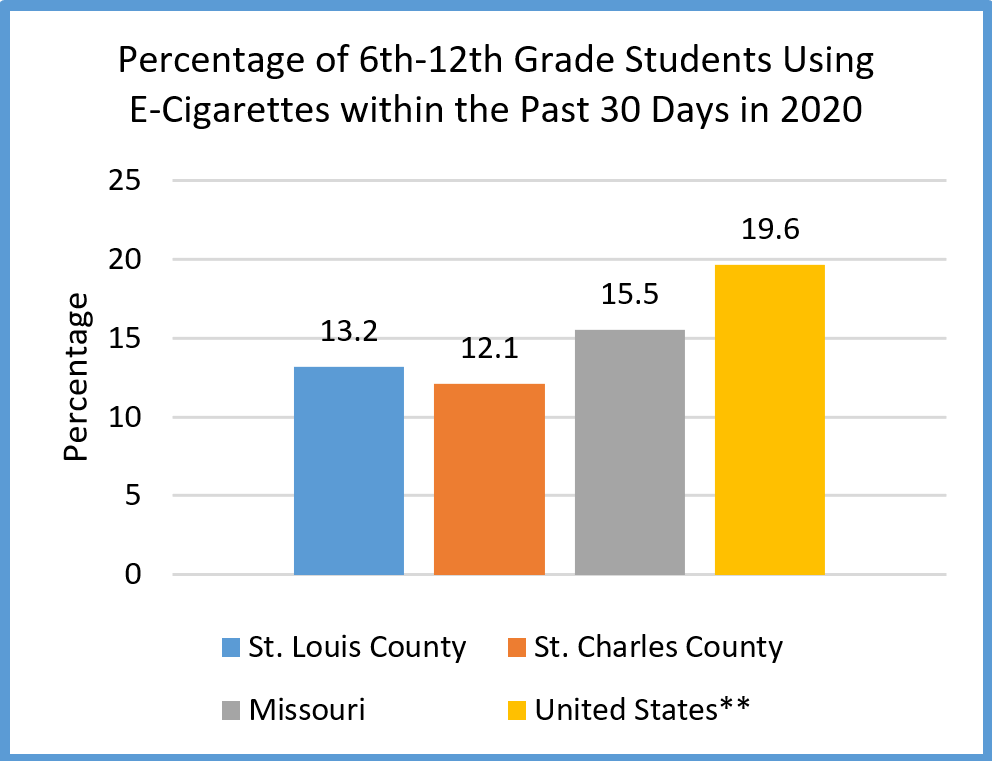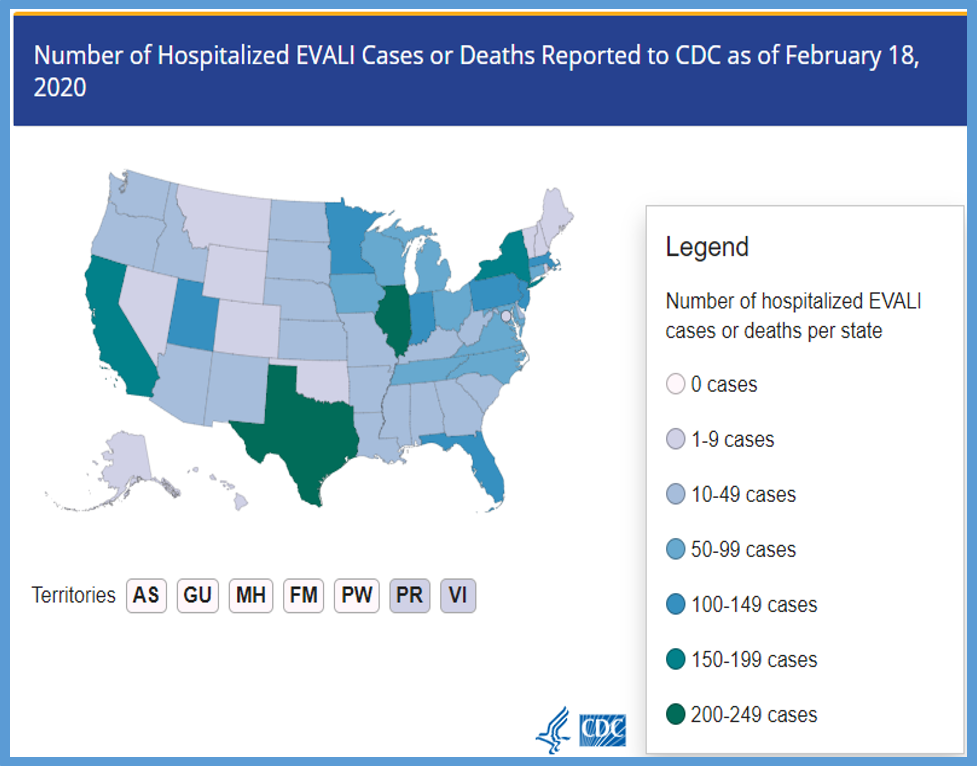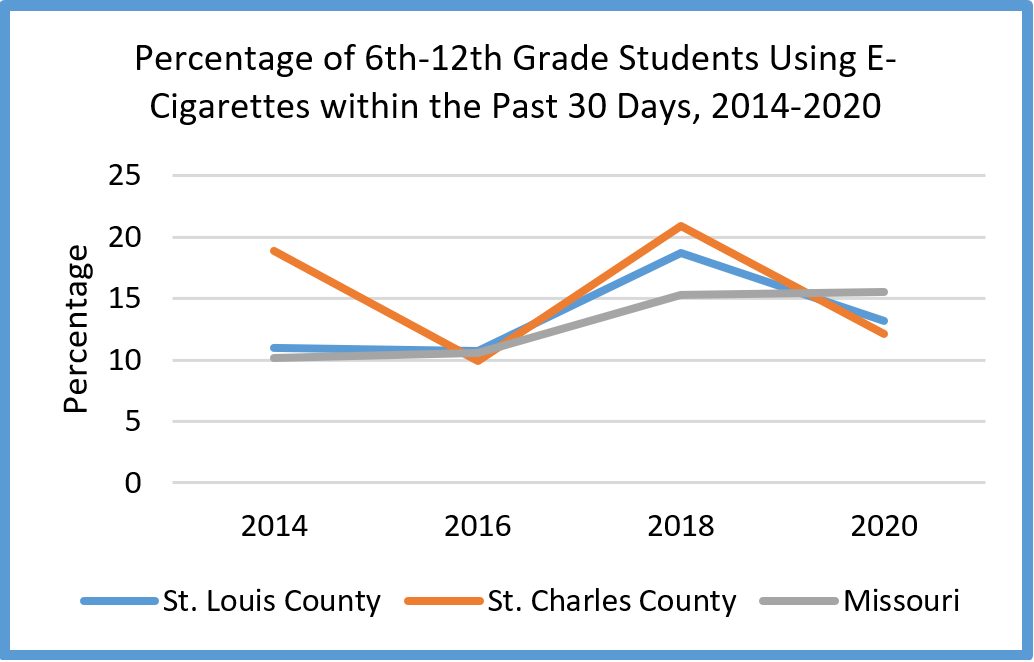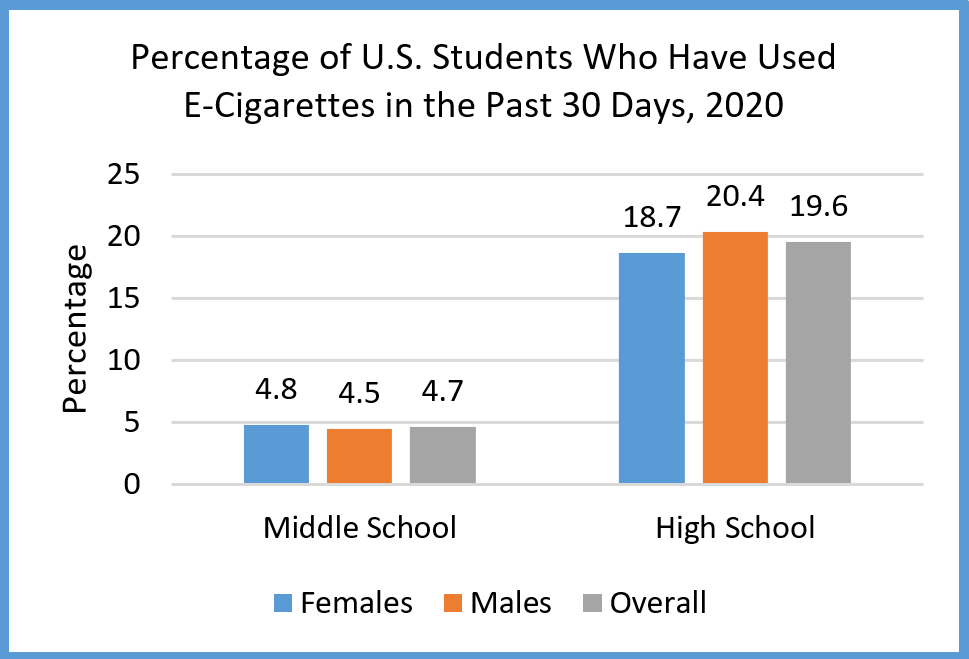E-Cigarette and Vaping Data Brief (2021)
Electronic cigarettes or e-cigarettes are devices that heat liquids to produce a vapor or aerosol, a mixture of particles in the air. E-cigarettes are known by many different names, and using an e-cigarette is sometimes referred to as “vaping.”
This content is also available in the following format:
Overview
Electronic cigarettes or e-cigarettes are devices that heat liquids to produce a vapor or aerosol, a mixture of particles in the air. E-cigarettes are known by many different names, and using an e-cigarette is sometimes referred to as “vaping.” The liquid in e-cigarettes often contains nicotine and other flavorings or chemicals that can harm the lungs and the developing adolescent brain. E-cigarettes have been the most commonly used tobacco product among youth since 2014, with an estimated 4.47 million youth users in the U.S. in 2020. (1)
Factors associated with youth tobacco product use are well-documented and include the following: social and physical environments, biological and genetic factors, mental health, and personal views. Youth are more likely to use tobacco products if they see their friends or parents using them or if they expect positive outcomes from smoking, such as weight loss. Other factors include low socioeconomic status, low self-image or self-esteem, lack of parental support, and seeing tobacco product advertising can also influence youth tobacco use. (1)
While the public health impact and economic burden of e-cigarette use are not yet clear, the effect of tobacco products, in general, is enormous. Smoking-related illness costs the U.S. more than $300 billion each year, including $170 billion for direct medical costs and $156 billion in associated lost productivity. While rates continue to decline, the Centers for Disease Control and Prevention (CDC) has monitored e-cigarette and vaping product-associated lung illness (EVALI) since August 2019. 2,087 hospitalizations or deaths due to EVALI have been reported as of February 18, 2020. (1)


City of St. Louis Surveillance of E-Cigarette Use
Unfortunately, data on youth e-cigarette use is unavailable for the City of St. Louis; however, we can make inferences about rates in our community by looking at surrounding areas. Based on a recent study, e-cigarette use is higher among urban populations than rural populations in the U.S. Department of Health and Human Services’ Heartland region (which includes Missouri). (3) Therefore, it is likely that the City of St. Louis will have higher rates of e-cigarette use than the two comparison counties. In 2020, 13.2% of St. Louis County middle and high school students had used e-cigarettes in the past 30 days, which was higher than the percentage of St. Charles County students with 12.1% and lower than Missouri students and United States (**high school only) students at 15.5% and 19.6%, respectively. (1,2) From 2014 to 2020, rates of current e-cigarette use among middle and high school students have fluctuated. Rates for St. Louis County and St. Charles County peaked in 2018 at 18.7% and 20.9%, respectively, and subsequently declined in 2020. The Missouri rate has increased from 2016-2020, peaking at 15.5% of students in 2020. (2) Looking at national rates, e-cigarette use is slightly higher in males than in females, but only at the high school level. The percentage of students who had used e-cigarettes in the past 30 days was significantly higher in high school students than in middle school students for both sexes. (1)


The burden of e-cigarette use among youth in Missouri may be ascribed to a high number of youths reporting associated risk factors, such as feeling depressed, perceiving a low risk of use, and perceiving that people who smoke e-cigarettes are “cool.” Based on 2020 data, 25.6% of Missouri high school students felt very sad always or often in the past month. 31.8% believed their peers would think someone was “very cool” or “pretty cool” if they used e-cigarettes, and 37.9% believed there was “no risk” or only “slight risk” if they smoked e-cigarettes. (2)
What Can Health Departments Do to Reduce and Control E-Cigarette Use?
- Promote increased cost of tobacco products (for example, through increased taxes).
- Encourage policies that prohibit smoking in indoor areas of workplaces or public places.
- Advocate to raise the minimum age of sale of tobacco products to 21 years.
- Prepare TV and radio commercials, posters, and media messages aimed at kids and teens to counter tobacco product ads.
- Assist with community programs and school/college policies that encourage tobacco-free places and lifestyles.
- Promote community programs that lower tobacco advertising and promotions and help make tobacco products less easily available.
- Educate the community on the risks of e-cigarette use.
- Coordinate with local organizations to offer physical and mental health services.
- Connect people to smoking cessation resources such as Freedom from Smoking and SmokeFreeTXT.
Sources
- Centers for Disease Control and Prevention (www.cdc.gov)
- Missouri Student Survey, https://dmh.mo.gov/alcohol-drug/missouri-student-survey
- Mumford, E. A., Stillman, F. A., Tanenbaum, E., Doogan, N. J., Roberts, M. E., Wewers, M. E., & Chelluri, D. (2019). Regional Rural-Urban Differences in E-Cigarette Use and Reasons for Use in the United States. The Journal of Rural Health: official journal of the American Rural Health Association and the National Rural Health Care Association, 35(3), 395–404. https://doi.org/10.1111/jrh.12333
Help Us Improve This Page
Did you notice an error? Is there information that you expected to find on this page, but didn't? Let us know below, and we'll work on it.
Feedback is anonymous.